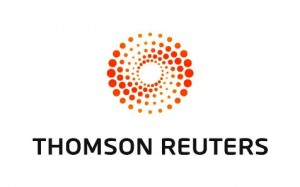 Thomson Reuters has undertaken its annual survey into the cost of compliance and the challenges firms expect to face in the year ahead. Nearly 600 compliance professionals from financial services firms across the world took part in the survey. The report builds on annual surveys of similar respondents conducted over the last six years, and where relevant highlights year-on-year trends and developments.
Thomson Reuters has undertaken its annual survey into the cost of compliance and the challenges firms expect to face in the year ahead. Nearly 600 compliance professionals from financial services firms across the world took part in the survey. The report builds on annual surveys of similar respondents conducted over the last six years, and where relevant highlights year-on-year trends and developments.
The findings once again highlight the pressures facing compliance functions, and for 2015 serve as a red flag indicator that resources, outside of G-SIFIs are in danger of being stretched too thinly.
The main findings are:
- Ever-increasing change: compliance officers are clearly experiencing regulatory fatigue and overload in the face of snowballing regulations. Seventy percent of firms are expecting regulators to publish even more regulatory information in the next year, with 28 percent expecting significantly more.
- More than a third of firms spend at least a whole day every week tracking and analyzing regulatory change. Global regulatory change is creating the biggest challenge due to inconsistency, overlap and short time frames. Understanding regulators’ expectations and requirements and being able to interpret and apply them is as great a challenge as keeping abreast of the changes.
- Three-quarters of firms are expecting the focus on managing regulatory risk to rise in 2015. This is predominantly due to the greater regulatory focus on conduct risk.
- Personal liability: 59 percent of respondents (53 percent in 2014) expect the personal liability of compliance officers to increase in 2015, with 15 percent expecting a significant increase. Twenty-one percent of G-SIFIs expect a significant increase in personal liability.
- Resource challenges: from recruitment challenges in finding and retaining suitably skilled staff to increasing pressure on budgets. Two-thirds of firms are expecting skilled staff to cost more in 2015.
- Regulatory matters are consuming disproportionate amounts of board time, from correcting non-compliance and preventing further sanctions to implementing structural changes to meet new rules.
- Interaction and alignment between control functions continues to show a lack of coordination. Nearly half of compliance functions are spending less than an hour each week with internal audit.
- G-SIFIs, in comparison with the full population of respondents, have the greatest expectations about budget and resources available for tracking and analyzing regulatory change, updating policies and liaising with regulators.
The report can be downloaded from the Thomson Reuters Risk Management Solutions Website






















